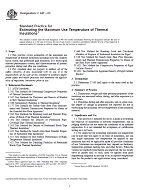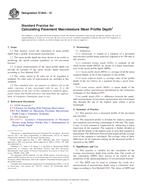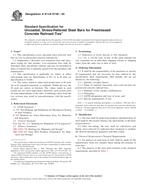1.1 These guides offer the selection of a suitable system of classification of rock mass for specific engineering purposes, such as tunneling and shaft-sinking, excavation of rock chambers, ground support, modification and stabilization of rock slopes, and preparation of foundations and abutments. These classification systems may also be of use in work on rippability of rock, quality of construction materials, and erosion resistance. Although widely used classification systems are treated in this standard, systems not included here may be more appropriate in some situations, and may be added to subsequent editions of this standard.
1.2 The valid, effective use of this standard is contingent upon the prior complete definition of the engineering purposes to be served and on the complete and competent definition of the geology and hydrology of the engineering site. Further, the person or persons using this standard must have had field experience in studying rock-mass behavior. An appropriate reference for geological mapping in the underground is provided by Guide D 4879.
1.3 This standard identifies the essential characteristics of seven classification systems. It does not include detailed guidance for application to all engineering purposes for which a particular system might be validly used. Detailed descriptions of the first five systems are presented in STP 984 (1), with abundant references to source literature. Details of two other classification systems and a listing of seven Japanese systems are also presented.
1.4 The range of applications of each of the systems has grown since its inception. This standard summarizes the major fields of application up to this time of each of the seven classification systems.
1.5 The values stated in SI units are to be regarded as the standard. The values given in parentheses are mathematical conversions to inch-pounds units that are provided for information only and are not considered standard.
1.6 This standard does not purport to address all of the safety concerns, if any, associated with its use. It is the responsibility of the user of this standard to establish appropriate safety and health practices and determine the applicability of regulatory limitations prior to use.
1.7 This standard offers an organized collection of information or a series of options and does not recommend a specific course of action. This document cannot replace education ore experience and should be used in conjunction with professional judgement. Not all aspects of this standard may be applicable in all circumstances. This ASTM standard is not intended to represent or replace the standard of care by which the adequacy of a given professional service must be judged, nor should this document be applied without consideration of a project’s many unique aspects. The word “Standard“ in the title of this document means only that the document has been approved through the ASTM consensus process.
Product Details
- Published:
- 07/01/2008
- Number of Pages:
- 30
- File Size:
- 1 file , 890 KB
- Redline File Size:
- 2 files , 1.7 MB


